
surfresearch.com.au
de vis-norton : sport of princes, 1916
de vis-norton : sport of princes, 1916
| home | catalogue | history | references | appendix |
 |
surfresearch.com.au
de vis-norton : sport of princes, 1916 |
| Page 146 Summer and
winter in Hawaii surfboard riding and outrigger
canoe coasting on the waves reign king and queen of sports. Many who learn to ride the elusive surfboard remain months and years in Hawaii instead of the weeks they had intended. First published in
National Geographic Magazine April 1908 Vol. XIX No. 4, page 309. Noetzel, Gr :Winter Sport in Hawaii, 1908. Advertisement for Hawaii Promotion Committee. Honolulu, Hawaii. |
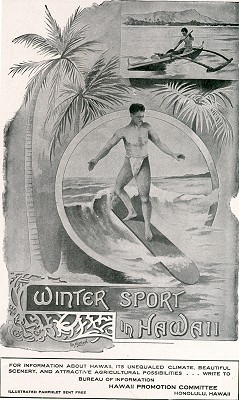 |
| Page 147 In for a long ride. Duke Kahanamoku, Waikiki, 1910. Initially appearing as an advertising logo, it was included in Gurrey's Surf Riders of Hawaii. Honolulu, 1911-1914. And as the cover photograph of The Mid-Pacific Magazine Volume 1, Number 1. Alexander Hume Ford, Honolulu, January, 1911. |
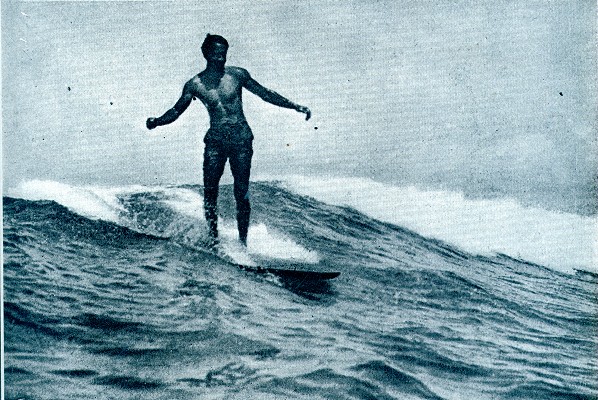 |
| Page 149 Surfboard
riding has become so typical of Hawaii
that
it is now one of the great features of the annual February Mid-Pacific Carnival and forms the subject of color porters that are sent abroad to attract visitors. |
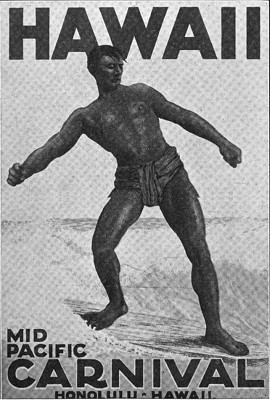 |
| There are few more
charming spectacles even in this land of beauty than the daily troop
of surf-riders flashing shoreward on the crest of the long rollers. Sunshine, laughter, the beautiful surroundings of sea, mountain, and palm-fringed shores combine in no small measure with the sport itself to give health, strength, and la joir de vivre to all who participate in the ancient pastime of the Hawaiian people. |
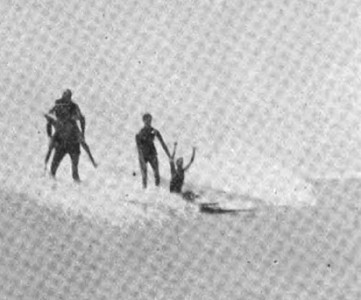 |
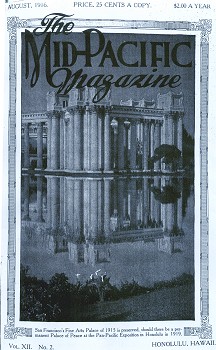 |
A.H. Ford, Honolulu, Volume 12, Number 2, August 1916. Hathitrust http://hdl.handle.net/2027/chi.098054190 |

| home | catalogue | history | references | appendix |